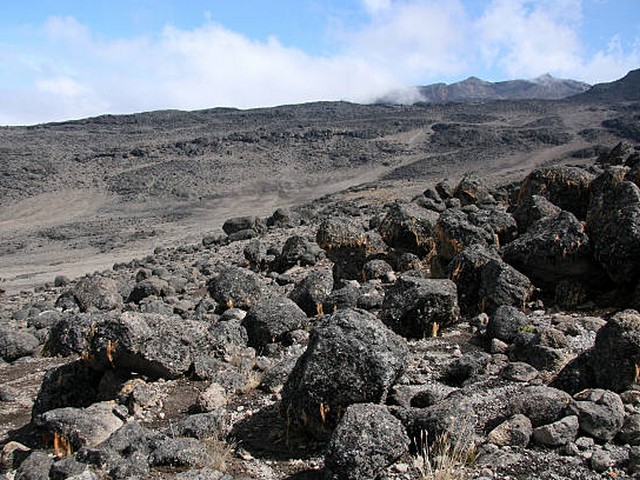How To Support Wildlife Conservation On Your Kilimanjaro Trek
Ascending the majestic slopes of Mount Kilimanjaro isn’t just a journey through various ecological zones — it’s a passage through a living museum of diverse wildlife and rich habitats. As enthusiasts of adventure and guardians of nature, we at Kilimanjaro Centre for Trekking and Ecotourism (KCTE) are committed to preserving the natural beauty and ecological integrity of this iconic mountain. In this blog, we will explore how you, as a trekker, can contribute to wildlife conservation efforts during your climb and why it’s crucial for ensuring that future generations can also experience the awe-inspiring presence of Kilimanjaro.
Understanding Kilimanjaro’s Ecological Importance
Mount Kilimanjaro is more than just the highest peak in Africa; it’s a biodiverse hotspot that supports a range of ecosystems from lush rainforests to alpine deserts. This unique environmental setup hosts numerous species of flora and fauna, some of which are endemic to the region. Preserving these habitats is vital not only for the survival of these species but also for maintaining the ecological balance of the region.
Responsible Trekking: Your Role in Conservation
Minimize Your Environmental Impact
Every trekker must adopt a ‘Leave No Trace’ philosophy. This means packing out everything you bring in, sticking to designated trails to prevent erosion, and avoiding any disturbance to wildlife. Kilimanjaro’s delicate environments can be heavily impacted by human activity, and it’s our responsibility to tread lightly.
Support Eco-friendly Tour Operators
Booking your climb with a responsible outfitter such as Kilimanjaro Centre for Trekking and Ecotourism (KCTE) is a crucial step in supporting conservation efforts. We ensure that all our operations are sustainable, from using solar energy in our camps to employing water conservation measures. By choosing KCTE, you are also supporting local conservation initiatives that contribute directly to the preservation of Kilimanjaro’s ecosystems.
Engage with Local Conservation Projects
During your trek, take the opportunity to learn about local conservation projects and how they help protect Kilimanjaro’s wildlife. KCTE is involved in various initiatives aimed at habitat restoration, anti-poaching efforts, and community education programs. Your involvement, be it through direct participation or donations, can make a significant difference.
Wildlife Conservation Initiatives on Kilimanjaro
Anti-Poaching Efforts
Kilimanjaro is home to many species that are threatened by illegal poaching activities. Anti-poaching patrols and wildlife monitoring are crucial for the survival of these species. KCTE supports local rangers by providing them with necessary equipment and resources to combat poaching effectively.
Habitat Restoration Projects
Human activities have led to habitat degradation in some areas of Kilimanjaro. Restoration projects focus on reforesting areas and protecting natural water sources. By joining hands with organizations involved in these projects, trekkers can contribute to the ecological health of the mountain.
Community Involvement and Education
Conservation is sustainable when the local community is involved. Programs aimed at educating locals about the benefits of wildlife conservation and sustainable practices help in creating a community that respects and protects its natural heritage. Trekkers can support these efforts by engaging with the community and learning about their culture and conservation methods.
FAQs About Supporting Wildlife Conservation On Your Trek
How can I ensure that I am booking with an eco-friendly tour operator?
Look for certifications and memberships in conservation organizations, check the operator’s sustainability policies, and read reviews focusing on environmental responsibility.
What specific actions can I take to minimize my impact during the trek?
Stick to the trails, carry all your waste back, use water sparingly, avoid using plastics, and do not disturb the wildlife or take any natural souvenirs.
Can trekkers volunteer in conservation activities during the climb?
While direct conservation work during the climb may not be feasible due to the challenging nature of the trek and legal restrictions, you can engage in educational sessions, and support the projects financially or through advocacy.
Are there educational programs about wildlife conservation available during the trek?
Yes, KCTE provides educational talks and materials throughout the trek focusing on the unique biodiversity of Kilimanjaro and ongoing conservation efforts.
Concluding Thoughts and Call to Action
Climbing Kilimanjaro is a call to adventure and a testament to one’s spirit of exploration. But it’s also an opportunity to contribute to something much larger than ourselves — the conservation of one of the Earth’s most incredible natural places. Every step you take can help preserve this wonder for future adventurers.
As you plan your trek, consider how you can be part of a sustainable journey. Choose Kilimanjaro Centre for Trekking and Ecotourism (KCTE), where every trek is a stride towards conservation. Let’s walk together not only towards the summit but also towards a better, more sustainable future for Kilimanjaro and its wildlife.
Book your climb with KCTE today, and be part of a meaningful adventure that values and actively contributes to the preservation of our planet’s natural heritage. Together, we climb not only mountains but also the heights of conservation and sustainability.




